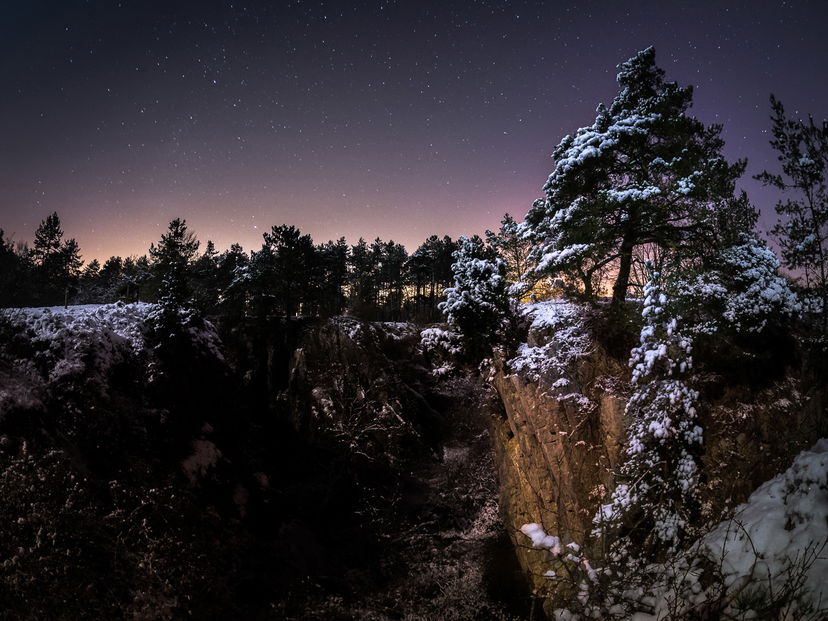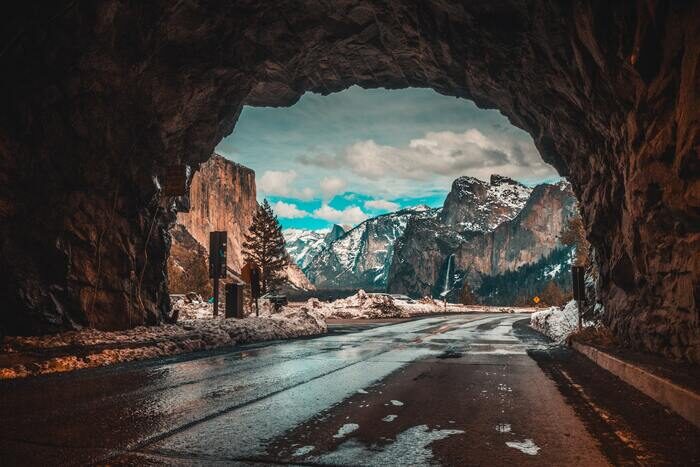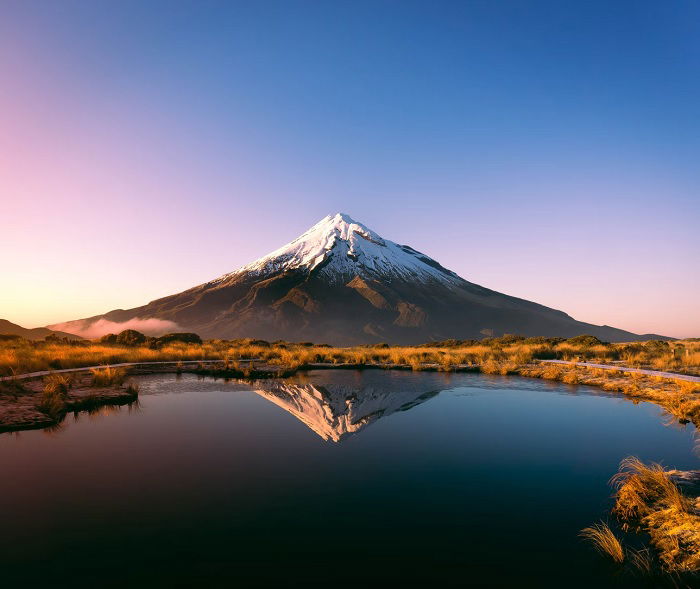10 Tips for Location Scouting Landscape Photography
When it comes to planning landscape photography shoots, location scouting is one of the most important aspects. When location scouting isn’t done properly, entire photography trips can be ruined. And that means you won’t get the landscape shots you were hoping for.
But what is the most important thing when planning a landscape shoot? Is Google Maps enough for pre-trip online research? And what do you need in your location-scouting backpack?
We answer all these questions and more in this article. Keep reading for all the best tips for location scouting when shooting landscape photography.
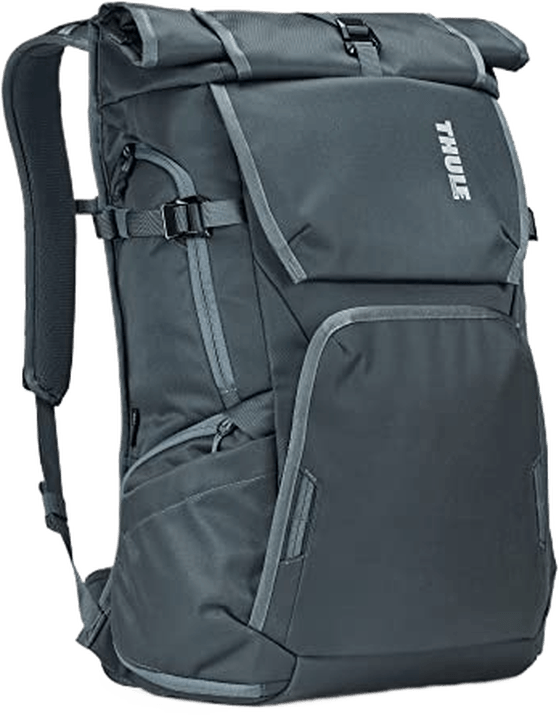
Best Tips for Location Scouting Landscape Photography
As the old saying goes, if you fail to prepare, you prepare to fail. While landscape photography isn’t a matter of life and death, location scouting preparations are still important. Your success in scouting locations can make or break a landscape photography expedition.
Use these location-scouting tips to help you plan your next successful landscape photoshoot. By following this expert advice, you’re fare more likely to capture some stunning landscape photographs.
Do Thorough Research Online
The internet is a location scout’s best friend. It allows you to do tons of research without even stepping outside your front door.
Using the internet might sound like an obvious tip. But some photographers might not realize just how much location research they can do sitting at their computer.
Google Maps is the most obvious online tool for location scouting. It allows you to view pretty much anywhere in the world. It gives you images of some of the main locations. And you’ll get a good understanding of the terrain. And in many countries, it provides you with public transport information.
If you’re taking well-traveled routes, you can plan your entire trip just on Google Maps.
But Google Maps does have its limitations. And it shouldn’t be the only tool you use in your online research.
Wikiloc and Alltrails are two very useful websites if you want to go off-roading. Both websites provide information on hiking trails and lesser-known footpaths. They give you maps and a descriptive guide of the routes, listing landmarks along the way.
Online forums are another great online resource when scouting landscape locations. Websites like Reddit might have the info you need. And if it doesn’t, you can ask the Reddit community yourself.
Location scouts should also use Facebook to its fullest. You can find groups dedicated to certain cities, towns, or regions. These are full of people who are knowledgeable and enthusiastic about that area. They’ll be happy to give you location tips, transport advice, and general advice.
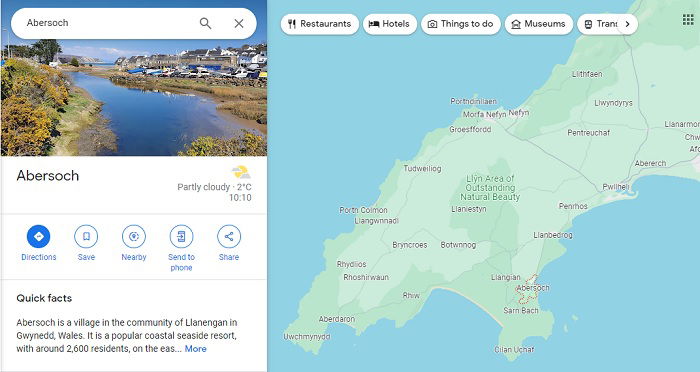
Google Maps search of Abersoch in North Wales
Ask the Locals
If you’re traveling to a new place, you should always tap into the well of local knowledge as much as possible. They know the area better than anyone. And they’ll have insider information on all the most beautiful local spots. And many of them won’t be in the guidebooks!
Locals can tell you where to go and how to get there. They can advise you on public transport. And you’ll get tips you never even considered. But how do you make contact with locals?
Most cities and even many smaller towns have tourist information centers. These are a great first stop when you arrive somewhere new.
Pubs, inns, and restaurants are your best bet in rural areas. Small village shops are also useful for fact-finding. You can pop your head in and ask a few questions about the area. Many people are proud of where they come from, so it’s easy to find enthusiastic talkers.
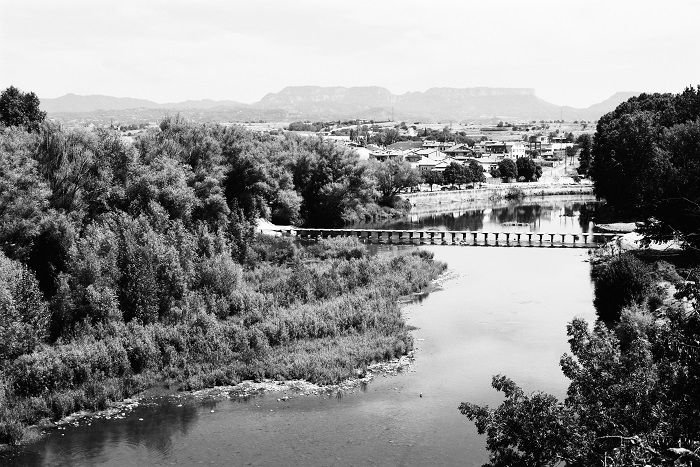
River Ter, Manlleu on Adox Scala 50 © Christopher Bryan-Smith
Understand the Seasons and Weather Patterns
The seasons won’t be such a problem if you stay close to home. But if you’re traveling to a faraway destination, you need to have a good understanding of the season and weather patterns.
You need to know what season to expect. And you should understand what that season entails and how that affects your objectives.
Summer in most places means high temperatures. It might also mean areas are dryer than usual. If you travel in winter, does the location usually have snow at that time of year? These are major considerations when thinking about the seasons.
Some countries have wet and dry seasons. And tropical countries often have a monsoon season, which can be dangerous.
Knowing the major weather patterns allows you to prepare more accurately and thoroughly. If you know what weather to expect, you can pack accordingly. Packing for the wrong season can put you in serious danger.
You should ask about weather patterns when talking to locals. They might give you important info on microclimates. And they can tell you if certain footpaths are impassable during certain times of the year.
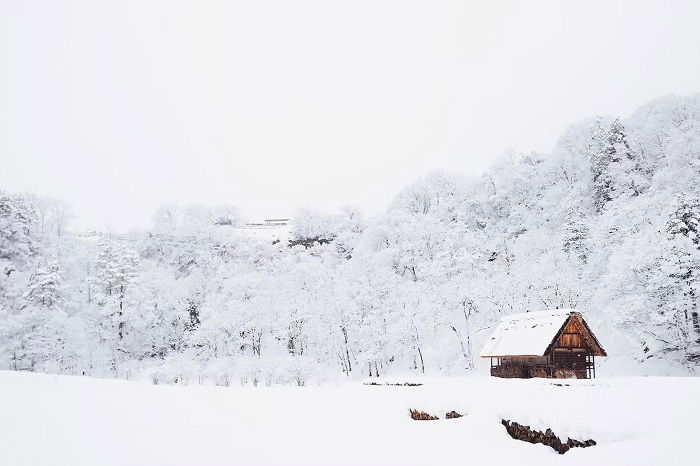
© Fabian Mardi
Constantly Monitor the Weather
Whenever you’re shooting outside, you should keep a constant eye on the weather. This means being aware of the weather around you and looking for changes. It also means keeping an eye on the forecast so you have an idea of what’s coming your way.
There are several reasons landscape photographers should keep an eye on the weather. Firstly, they’ll know if they can actually get the shots or not. If it starts to rain heavily when you arrive at the location, you might not be able to shoot. But if you know the rain will stop at a certain time, you can still head out.
You also have safety concerns. You don’t want to head up a mountain during a sunny spell only to have a blizzard fall upon you when you reach the top. This not only puts your shoot in jeopardy, but it can put your life in danger.
It’s also worth monitoring the weather for creative reasons. You might want cloud cover over your landscape. Or you might want freshly fallen snow. Knowing when and where these weather events might happen helps plan your day.
The tide should also be considered weather. And it’s very important when shooting on the coastline. There are safety concerns, as you don’t want to get caught too far out when the tide comes in.
The tide also affects the geography of your location. Some shooting spots will in inaccessible when the tide is in or out. And the landscape might look completely different than you had hoped if you arrive when the tide is wrong.
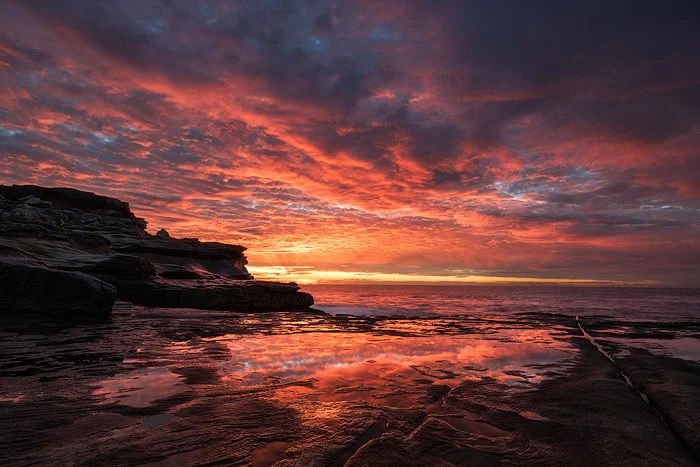
© Anton Gorlin
Plan Your Time
Most photographers know that golden hour and blue hour are the best times to shoot landscape photography. But that doesn't mean you should arrive exactly one minute before the best light.
These timeframes can be easily extended depending on weather conditions. For instance, the sun can produce crepuscular rays two hours before sunset. Or the clouds can lighten up 75 minutes before sunrise in extreme cases.
As for me, I need some extra time to get myself in the right mood. I can't just jump out of the car and start shooting right away.
I like to walk around, breathe the air, look at various elements, calm down, and clear my mind. I suppose it could be the same for others. And when the light comes in, you'll be ready.
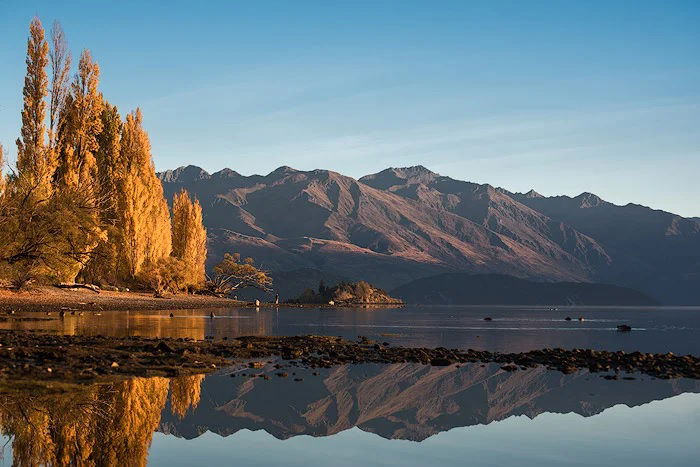
© Anton Gorlin
Utilize Your Smartphone to its Fullest
The smartphone has become an essential tool for landscape photographers. The most obvious use is as a test camera. Using your phone camera is the most efficient way to take test shots when scouting for locations or doing pre-shoot planning.
But smartphones have other uses when it comes to location scouting. Of course, you have Google Maps to help you find your way. The trouble is, in remote locations, you won’t be able to use the internet. However, you can use Google Maps offline.
Google Maps Offline allows you to download a specific map to your phone. You need the internet to download it. But then you can use the downloaded map when you have no connection.
Other apps are also incredibly useful for landscape photographers.
Every photographer should have PhotoPills on their smartphone. It’s an amazing tool that gives you all kinds of useful information. It tells you where the Sun will be at any given moment, no matter where you are. It also tracks the Moon and stars. It also has tools for calculating time-lapses and long-exposure shots.
Time and Date is another app that helps you plan landscape photography shoots. And if that’s not enough, we have an article on the best smartphone apps for landscape photography for you.
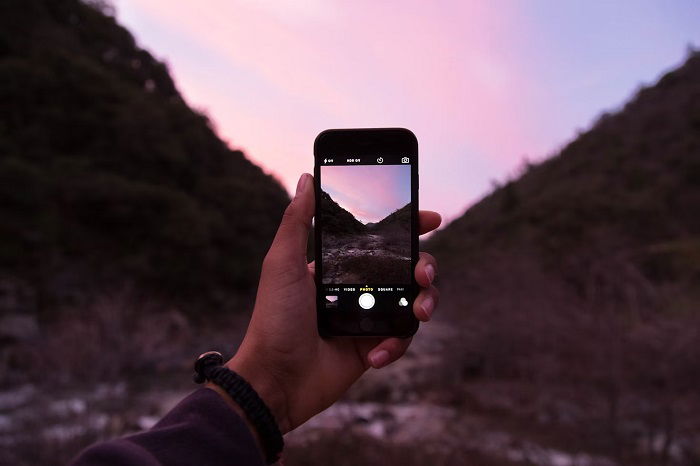
© Jordan McQueen
Always Take a Real Map
Google Maps is a fantastic tool on your smartphone. But smartphones are unreliable. They can crash or run out of batteries. Or you might drop it on the trail, resulting in a lost or broken phone.
Real maps are reliable, accurate, and don’t need batteries. It’s always best to carry one with you, especially if you’re going off the main roads.
Even if you are sticking to the main roads, a proper map is a useful thing to have. You can still get lost if you’re driving down unknown country roads. And if there’s no one to point you in the right direction, at least you’ll have the map.
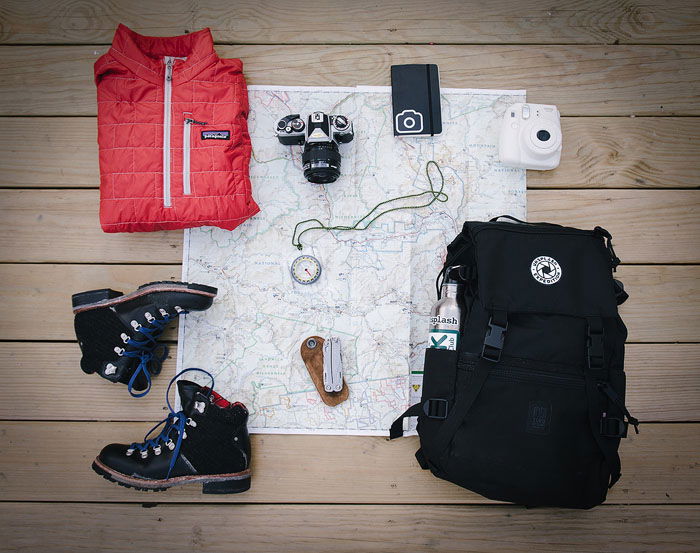
Never Set Off Without a Camera
A location scout never leaves the house without a camera. You never know when a stunning scene will present itself. And that’s true whether you’re traveling far or just going for a walk.
Ideally, you want your best camera to capture any landscape you see in all its glory. But if you’re using a big camera like a full-frame DSLR or medium-format camera, that just isn’t realistic.
Thankfully, most of us now have a smartphone with us at all times. The latest smartphone cameras are truly impressive. And they allow you to snap recon shots whenever something catches your eye.
But some photographers prefer having a dedicated scouting camera. They prefer a camera with a full frame of settings and features, but that doesn’t weigh them down too much.
The Olympus OM System Tought TG-7 is the perfect compact camera for location scouting. The MP count is fairly modest at only 12 MP. But it has a wide range of shooting modes and is incredibly durable.
The Olympus OM System OM-5 is another decent option. As a Micro Four Thirds camera, it’s compact compared to full-frame cameras. The features are excellent. And it’s completely weather-sealed, so working outdoors isn’t an issue.
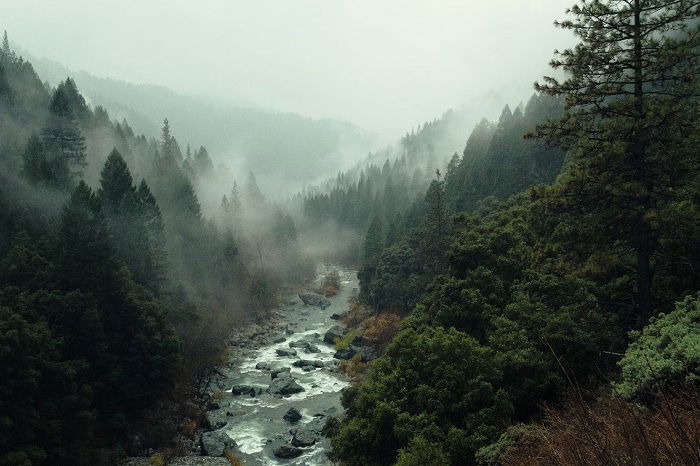
© Pine Watt
Pack the Right Gear
Finding a reliable camera backpack should be your starting point when thinking about a landscape pack. And the Thule Covert is our top recommendation.
The Covert is a durable camera backpack that’s built for life in the great outdoors. It’s thoroughly weatherproof and has ample storage for your cameras and landscape photography accessories. See the full review of the Thule Covert for an in-depth look at this top camera backpack.

Then you have your cameras and lenses. We don’t have time to look at both of those topics here, but you can see our articles on the best cameras for landscape photography and the best lenses for landscape photography for more info.
You always need to pack appropriate clothing and spares of essentials like socks. You should take clothes that protect you from the worst weather possible in that area. In most temperate areas, that will be heavy rain and cold temperatures. But you might have to deal with more extreme weather in more remote locations.
Extra important weather-related accessories are a packable rain jacket and rain cover for your backpack. Some backpacks come with rain covers. But if yours doesn’t, you’ll need one to keep your pack dry.
A first aid kit should be in your pack at all times. Even if you’re an experienced outdoors person, bad luck can strike at any moment. When it comes to safety, you need to be prepared for anything.
A portable power bank is a modern gadget that’s become a must-have for landscape photographers. With one of these in your backpack, you don’t have to worry about your phone running out of juice. And they can even charge some cameras if they have a USB connection.

Take a waterproof SD card case with you when you’re out and about. If your memory card fills up, you can’t take any more photos even if you aren’t done shooting for the day. Having spares is vital. And keeping them safe is just as important when working outside. Here’s our article on all the best SD card cases.
There are plenty of other gadgets landscape photographers love to use. You can check them all out in our full list of the best accessories for landscape photographers.
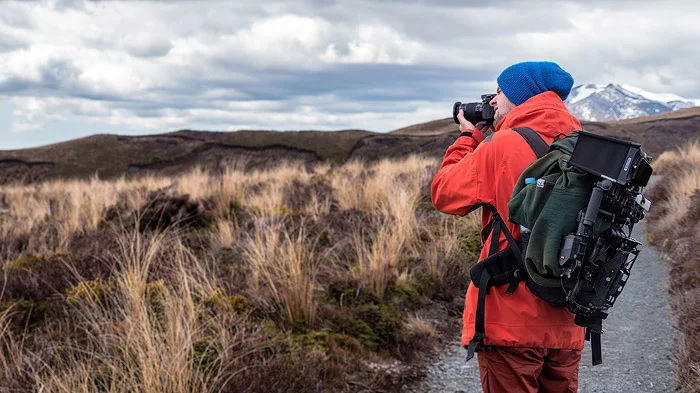
© Anton Gorlin
Follow Your Instincts
While you don’t want to take too many unnecessary risks, you should listen to your instincts from time to time. If you stick to the same beaten path as everyone else, you won’t find original landscape compositions. You’ll have images that look similar to everyone else’s.
If you have everything you need in your pack, feel free to make a detour. Take the less-walked road and see where it leads you.
Always be cautious and stay within your limits. Don’t take unknown roads if they look dangerous. Don’t trespass on private property. And always play it safe if there’s even a hint that the weather is turning bad.
But if you’re bored of the same old hiking trail, follow your nose and find something that excites you. Give yourself the freedom to discover new landscapes for unique compositions.
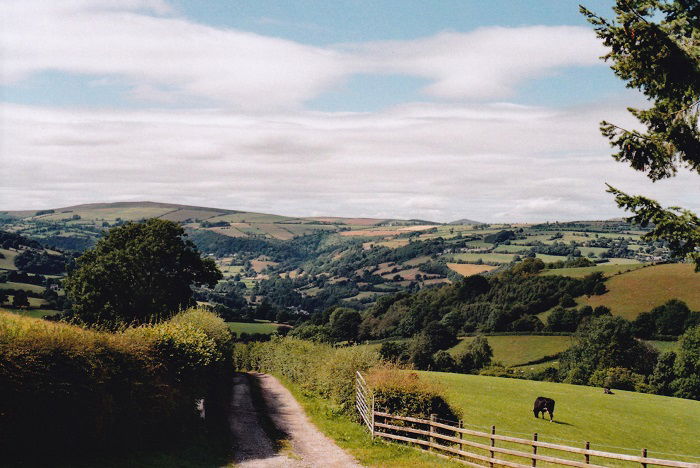
Ceiriog Valley © Christopher Bryan-Smith
Take Safety Precautions
You should take safety precautions even if you’re scouting locations in an area you know well. These can be minor things like dressing appropriately and carrying drinking water.
But when you’re scouting further into the wild, you need to take more care and be more proactive with your safety measures.
We’ve already touched on some safety items you might carry in your pack. Of course, a first aid kit is vital. But packing a raincoat and carrying a fully charged power bank are also essential precautions. Being able to charge your mobile phone outside could save your life.
A physical map is another safety item you should carry. And knowing how to read a map should be part of your preparations if you plan on doing distant landscape photoshoots.
Tell people where you are going. Inform them of your route and give them an estimated time of return. This could be friends and family. Or you can also tell people in a local pub or restaurant. If you are in trouble, you need someone to sound the alarm as soon as possible. And if no one is expecting you back, they won’t be able to.
This might sound negative or pessimistic. But it all goes back to preparation. And taking safety precautions is part of thorough location scouting preparations.
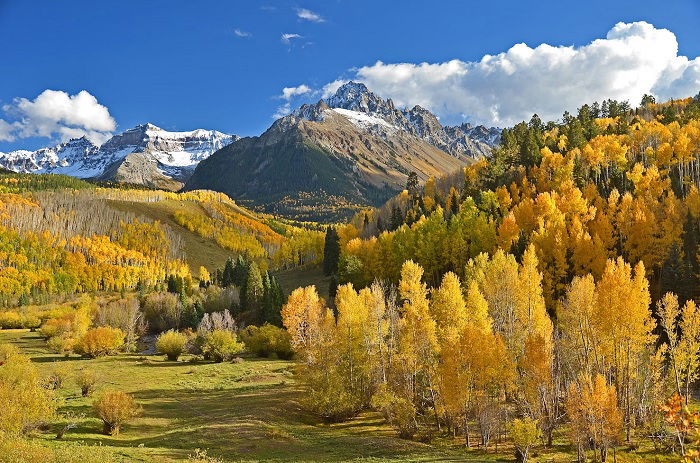
© Thomas Morse
Conclusion—Location Scouting for Planning Landscape Photography
Whether you’re shooting landscapes in your local area or further afield, you need to be prepared. And if you follow our advice, you’ll be more prepared than you ever have been before. Planning landscape photography shoots will be easier and more effective.
You might not need to follow these location-scouting tips to the letter, especially if you have experience. But even seasoned shooters can learn something from this list of landscape photography tips.
[courses category="Landscape"]
